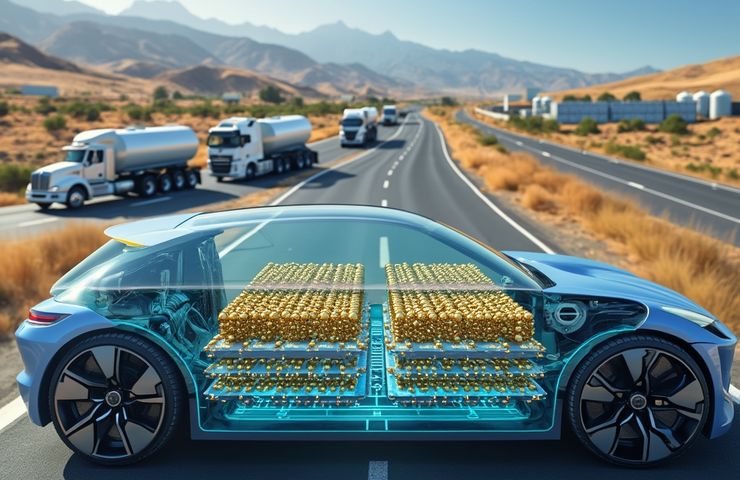Revolutionizing Fuel Cell Technology: UCLA's Graphene-Protected Platinum Catalyst for Hydrogen Fuel Cells
Key Ideas
- UCLA researchers, led by Professor Yu Huang, have developed a groundbreaking graphene-protected platinum catalyst for hydrogen fuel cells, projecting an astonishing 200,000-hour lifespan, significantly surpassing industry standards.
- The new catalyst showcases exceptional durability with only a 1.1% performance drop after 90,000 stress cycles, paving the way for more reliable and long-lasting fuel cell technology for heavy-duty vehicles.
- This innovation not only reduces platinum demand by 40% but also facilitates cleaner energy outlooks by supporting hydrogen-powered trucks, aligning with emission reduction targets such as California's zero-emission goals for heavy-duty transport.
- The potential adoption of this technology by major manufacturers like Daimler and Volvo could lead to significant CO₂ savings, up to 1.2 million tons yearly per 10,000 trucks, making a substantial impact on emission reductions and the expansion of hydrogen infrastructure.
In a groundbreaking development, UCLA researchers, under the leadership of Professor Yu Huang, have successfully created a new graphene-protected platinum catalyst for hydrogen fuel cells. This catalyst is projected to have an impressive lifespan of 200,000 hours, a remarkable advancement in fuel cell technology that far exceeds current industry standards. By encapsulating platinum nanoparticles in graphene shells within a porous carbon structure, the team has effectively shielded the catalyst from wear and tear associated with voltage cycling, showcasing minimal performance degradation even after extensive stress cycles. This discovery has significant implications for the future of fuel cell technology, particularly in the realm of heavy-duty vehicles.
The innovative catalyst not only improves durability but also reduces platinum demand by 40%, enhancing cost-effectiveness and sustainability in fuel cell production. Moreover, the newfound technology aligns with clean energy goals, particularly in heavy-duty transport, by supporting hydrogen-powered trucks and contributing to emission reduction targets such as California's zero-emission initiatives. Additionally, the potential adoption of this technology by prominent manufacturers like Daimler and Volvo could lead to substantial CO₂ savings, with estimates of up to 1.2 million tons per year per 10,000 trucks, signifying a significant step towards emission reductions and the advancement of hydrogen infrastructure. This breakthrough not only accelerates the deployment of zero-emission technologies but also underscores the critical role of research and innovation in driving sustainable solutions for the future.
Topics
Fuel Cells
Power
Technology
Innovation
Sustainability
Research
Transport
Industrial Decarbonization
Emission Reductions
Latest News
